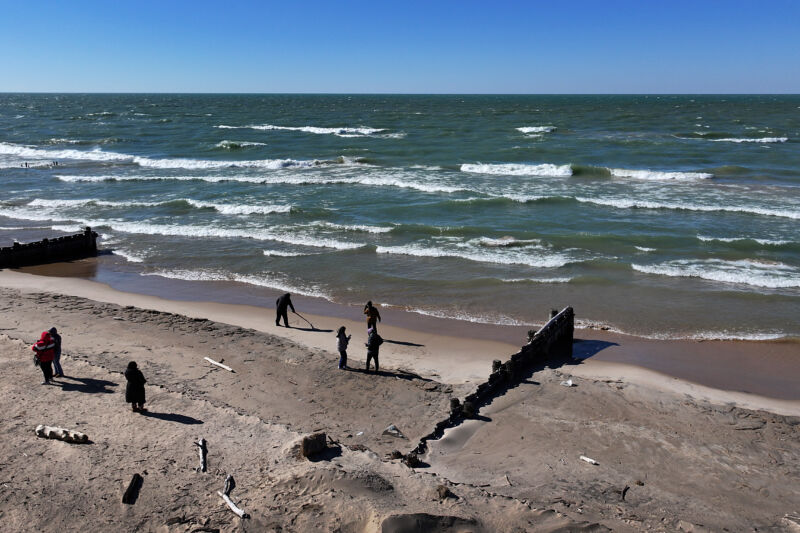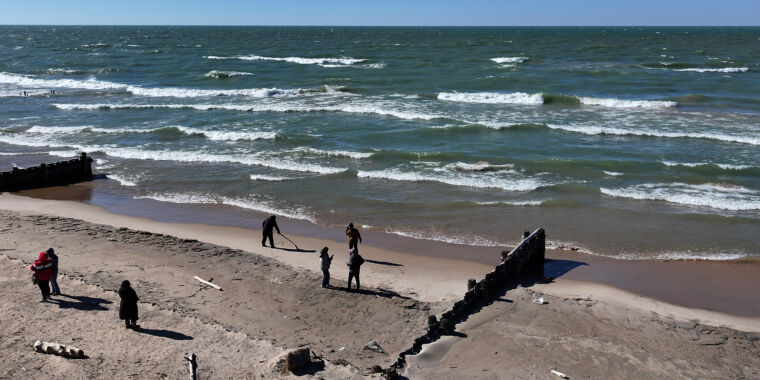
This article originally appeared on Inside Climate News, a nonprofit, independent news organization covering climate, energy and the environment. It is republished with permission. Sign up for their newsletter here.
The aquifer from which Joliet, Illinois, gets its drinking water will likely be too dry to support the city by 2030 — a problem facing more and more communities as the climate changes and groundwater diminishes. So Joliet looked to a huge water source 30 miles to the northeast: Lake Michigan.
It is the second largest of the Great Lakes, which together provide drinking water to about 10 percent of the U.S. population, according to the National Oceanic and Atmospheric Administration's Office for Coastal Management.
Joliet residents will soon join them. After years of discussion, the city council decided last year to replace the aquifer by bringing it in from Lake Michigan and purchasing it from the city of Chicago.
Construction on the project will start in 2025 with the goal of getting water flowing to residents by 2030, said Theresa O'Grady, an engineering consultant working with the city of Joliet. Joliet will foot the roughly $1 billion bill for the project, including the cost of building 65 miles of pipes that will transport water from Chicago to Joliet and adjacent communities.
Not just anyone can access the pristine, salt-free waters of Lake Michigan. That's rooted in the Great Lakes Compact, an agreement that determines how much water each state or Canadian province can take from the lakes each day. With few exceptions, only municipalities within the 295,200-square-mile basin (which includes the surface area of the lakes themselves) can receive approval for a Great Lakes drinking water diversion.
Joliet is one of those exceptions.
“I've occasionally seen news stories about, 'Is Kansas suddenly getting water from Lake Michigan because Joliet was getting water from Lake Michigan?' We do everything we can to show how much we respect the privilege we have to use Lake Michigan water. We spend hundreds of millions of dollars trying to be good stewards of that,” said Allison Swisher, Joliet's public utilities director.
In April 2023, then-Chicago Mayor Lori Lightfoot signed an agreement with Joliet and five other nearby communities to supply them with treated Lake Michigan water. Now legal experts and other Great Lakes communities are wondering how Joliet, far outside the Great Lakes basin, fits in.
The exemption in the Great Lakes Compact
The Great Lakes region, which includes parts of New York, Pennsylvania, Ohio, Indiana, Illinois, Michigan, Wisconsin and Minnesota, as well as the Canadian province of Ontario, is governed through the Great Lakes Compact, which came into effect in 2008.
“If you don't live in a cross-border community, or if you're not a city in a cross-border province, you don't have a ticket to the dance. You can't even ask for a water diversion for the Great Lakes,” says Peter Annin, director of the Mary Griggs Burke Center for Freshwater Innovation at Northland College and author of The Great Lakes Water Wars.
“With the exception of the state of Illinois,” he added.
The Chicago Exemption, as it is often called, has its roots in the 19th century, when animal waste from the city's livestock farms entered the Chicago River and eventually ended up in Lake Michigan.
“That's why Chicago is embarking on this massive water diversion project similar to the Panama Canal, to put all that sewage into this long canal, which would then connect to the Des Plaines River southwest of the city, and then to the Illinois River, and then the Mississippi River,” Annin said, referring to the infamous Chicago River reversal. “Chicago's solution was to flush the toilet at St. Louis.”
Every day, Chicago had the right to use billions of gallons of Lake Michigan water to divert it and dilute pollution downstream. The state of Wisconsin began challenging the diversion in the 1920s, arguing that Illinois' excess water use was causing water levels in the lake to drop. In 1967, the Supreme Court sided with Illinois, and now Chicago can do whatever it wants with its 2.1 billion gallons a day.
“So here we are today with this incredible Joliet water diversion proposal,” Annin said.

